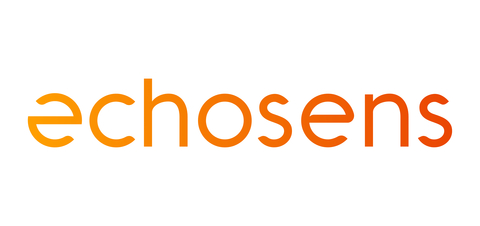Understanding the Link Between NAFLD and Diabetes: Echosens Points to New AACE Guideline Supporting FibroScan as Key Component of Type 2 Diabetes Management
Understanding the Link Between NAFLD and Diabetes: Echosens Points to New AACE Guideline Supporting FibroScan as Key Component of Type 2 Diabetes Management
Echosens Recognizes November 2022 American Diabetes Month, Urges Non-invasive Detection, Monitoring of Liver Fat and Stiffness
WALTHAM, Mass.--(BUSINESS WIRE)--Echosens North America, a high-technology company offering the FibroScan® portfolio of solutions, recognizes the importance of American Diabetes Month this November for bringing greater attention to the value of non-invasive technology, such as FibroScan, to measure and monitor liver stiffness and detect nonalcoholic fatty liver disease (NAFLD). According to the American Association of Clinical Endocrinology (AACE), the risk of NAFLD, a common co-morbidity of Type 2 diabetes, is two-to-threefold higher in individuals with Type 2 diabetes mellitus and/or obesity but can be halted or reversed if detected in its earliest stages.
These new guideline recommendations as reported in AACE reinforce the use of FibroScan solutions for the management of patients with NAFLD throughout the patient care continuum. The recommendations are a breakthrough in early diagnosis and management of patients with NAFLD, targeting primary care and endocrinology clinical settings.
“American Diabetes Month is an ideal opportunity to highlight this new guideline which includes 34 evidence-based clinical practice recommendations for the screening, diagnosis, and management of adults and children with NAFLD and/or NASH,” says Jon Gingrich, CEO, Echosens, North America. “Left undiagnosed, these conditions can be difficult to control, making early interventions more important than ever in helping individuals introduce lifestyle changes that can slow disease progression.”
AACE recommendations related to FibroScan include:
- Liver stiffness measurement by vibration controlled transient elastography (LSM by VCTE) should be used for further workup in individuals that are in the “high-risk” group who have an indeterminate or high FIB-4 score.
- LSM by VCTE is preferred as it can quantify liver fibrosis and liver fat with controlled attenuation parameter (CAP) for risk stratification in one test.
- LSM by VCTE is best validated to identify advanced disease and predict liver-related outcomes.
“Fortunately, with a diagnostic confirmation, lifestyle changes and continued care, individuals can integrate diet and exercise programs that effectively reduce liver fat and improve glucose control, which are consistent with approaches used for diabetes care,” says Gingrich. “American Diabetes Month demonstrates an effective public health outreach effort to increase awareness and advocacy for patients touched by diabetes and other related diseases.”
Global incidence of NAFLD is increasing and is estimated to affect 32.4% of the world’s population according to a 2022 study, with men more likely than women to develop it (39.7% vs. 25.6%). Approximately 70% of persons with T2D have NAFLD (steatosis), and approximately 15% have clinically significant liver fibrosis (stages ≥ F2). Additionally, prevalence rates of NASH are significantly higher in those with T2D and visceral obesity, affecting approximately 30% to 40% of persons with diabetes and between 25% and 30% of those with obesity. Type 2 diabetes mellitus and NAFLD frequently co-exist in patients and share the same pathophysiological manifestations, including hepatic steatosis and fibrosis. Left untreated, NAFLD can progress to nonalcoholic steatohepatitis (NASH), a more serious and complex condition that can lead to the development of cirrhosis and the need for a liver transplant.
FibroScan is a painless, non-invasive exam that assesses and monitors liver stiffness to detect NAFLD in its earliest stages, even when the individual is asymptomatic. As a non-invasive diagnostic tool recognized worldwide and validated in over 3,500 peer-reviewed publications and 160 international guidelines, including American Gastroenterological Association (AGA), American Association of Clinical Endocrinology (AACE) and American Heart Association (AHA), FibroScan uses LSM by VCTE and CAP to provide a high degree of diagnostic accuracy for liver steatosis that can be performed at the point-of-care. Based upon the FibroScan results, further assessments, such as painful or expensive liver biopsies, can be avoided.
About Echosens
Echosens, the developer of FibroScan®, is an innovative high-technology company offering a full range of products and services supporting physicians in their assessment and management of patients with chronic liver diseases. FibroScan is supported by over 3,500 peer-reviewed publications and 160 international guidelines. Examinations are covered by Medicare, Medicaid and many insurance plans. For more information, please visit https://www.echosens.com/.
Contacts
Brittany Tedesco
CPR Communications
btedesco@cpronline.com
201.641.1911 x 14
